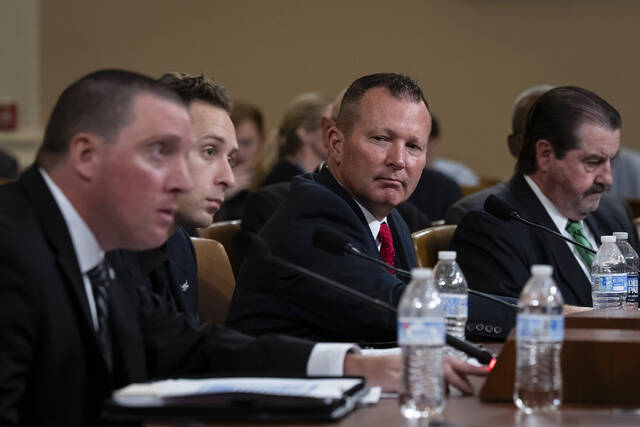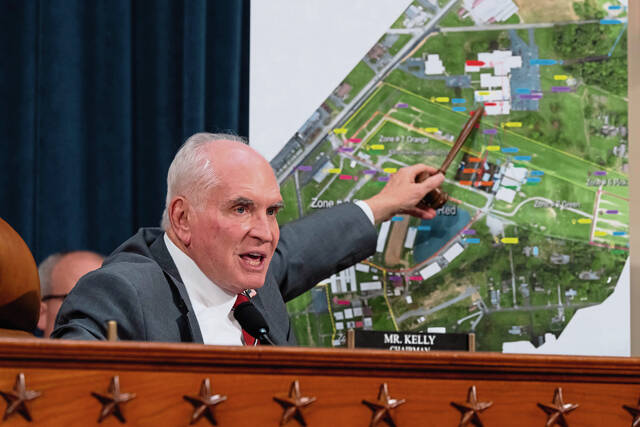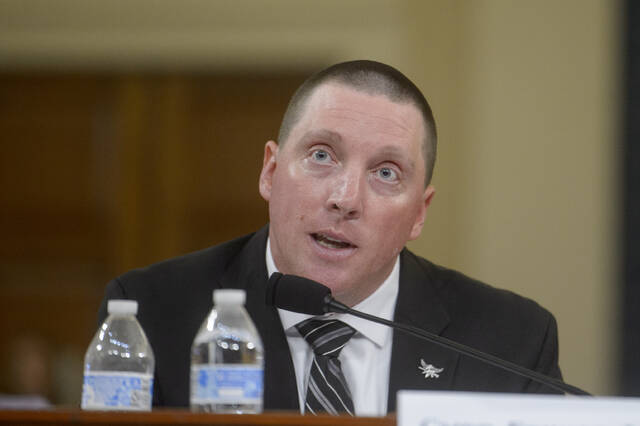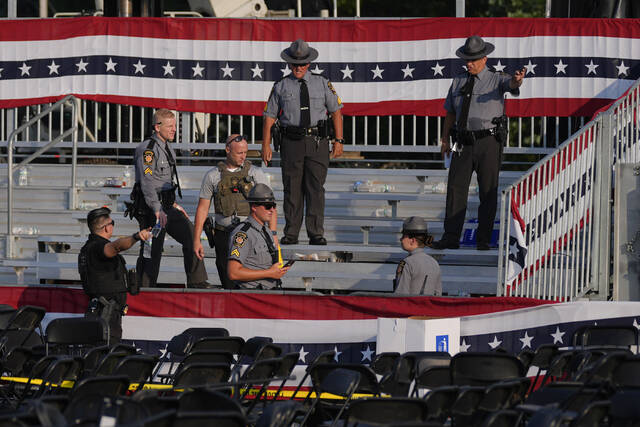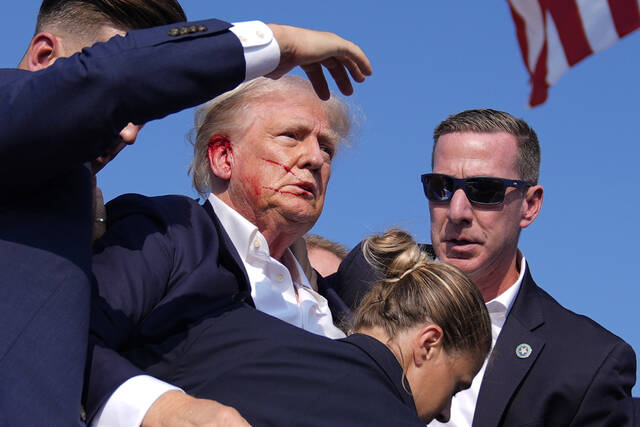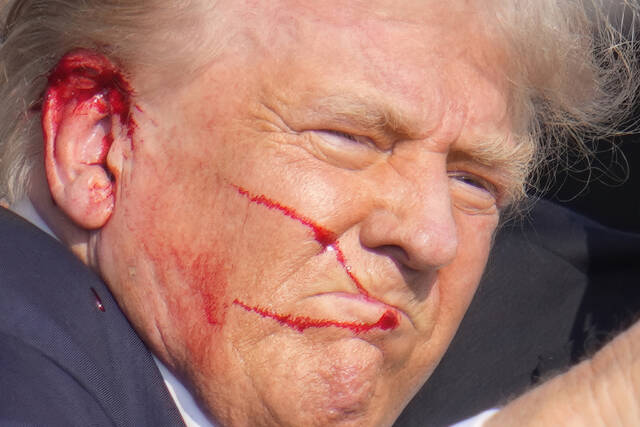Pittsburgh-area officials testify that communications problems plagued them during Trump rally shooting
As a congressional task force hearing Thursday dissected the security breakdowns that plagued Donald Trump’s July rally in Butler County, one member worried about the future.
“We have (former) President Donald Trump going back to Butler in the next few days,” said U.S. Rep. Lou Correa, a California Democrat. “Are we being lax here?”
There were few answers to be found during the inaugural hearing of the U.S. House Task Force on the Attempted Assassination of Donald J. Trump.
Trump is scheduled to return Oct. 5 to the scene of the attempt on his life, the Butler Farm Show grounds, and security concerns are paramount.
Led by U.S. Rep. Mike Kelly, a Republican from Butler County, the bipartisan task force grilled Pennsylvania and local law enforcement officers who were on scene that day about what some called a lack of proper planning for the July 13 rally where a gunman grazed Trump’s ear, killed one spectator and wounded two.
“On that day, everything that could’ve gone wrong apparently went wrong,” said Kelly, who was in the crowd at the rally. “We are going to have a second chance to do the right thing.”
Appearing before the panel in Washington, D.C., were Adams Township police Sgt. Edward Lenz, commander of Butler County’s emergency services unit; Pennsylvania State Police Lt. John D. Herold; and Butler Township Patrolman Drew Blasko. Allegheny County Medical Examiner Ariel Goldschmidt appeared by video.
Some of the 90-minute hearing focused on disjointed and delayed communications among the various law enforcement agencies at the rally, including the Secret Service and Butler County’s emergency services unit.
Pennsylvania State Police supervisors and Butler County county law enforcement told the 11-member task force they had trouble talking with each other — and, sometimes literally, weren’t on the same wavelength.
Different departments used multiple radio frequencies, at least one of which was encrypted, to update their security teams during the rally.
It remained unclear what the Secret Service heard about gunman Thomas Crooks — or what they did to apprehend him — before the 20-year-old nursing home aide from Bethel Park fired eight rounds from a rooftop. A sniper killed him.
No active Secret Service agents who were at the rally testified Thursday.
Lenz, commander of Butler County’s emergency services unit, testified that he showed an image of Crooks at the rally to one agent 10 minutes before the assassination attempt, but it was unclear what action the agent took.
Some task force members focused on the lack of a clear chain of command to handle security at the rally.
The Secret Service didn’t advise county law enforcement on where or when to position their security teams, Lenz testified.
Agents didn’t walk through the site with local police the day before the rally, Lenz said. They also did not check in with the county teams on the day of the rally.
“They didn’t even check in with you to see if your guys were ready to go?” asked Rep. Mark Green, a Tennessee Republican. “I find that unbelievable.”
There were other communications headaches.
Some officials used FirstNet, a public safety broadband network, to talk by cellphone with colleagues during the rally, authorities testified. Others didn’t.
“I think there were clearly mistakes made,” testified Patrick Sullivan, a former Secret Service agent who served on security details for former presidents Ronald Reagan and George H.W. Bush. “The Secret Service needs to shift how we do business.”
Sullivan called the lack of a single, unified command station at the rally “very atypical.”
Local officials pushed back when questions arose about security responsibilities.
Blasko, the Butler Township patrolman, defended himself, telling the task force he “did what was requested.”
“With the information we had, I believe we did the very best we could,” Blasko said.
Members of the task force pushed witnesses to explain why Crooks was able to settle on a roof with a sight line to Trump.
“A 10-year-old looking at a satellite image” could’ve recognized the threat of that building’s rooftop, said Rep. Pat Fallon, a Texas Republican.
Addressing Sullivan, the former agent, he said, “That is a stain on your agency.”
Blasko told the task force that, even before the event started, he was concerned about the building, which is outside the fairgrounds’ security perimeter but was just 150 yards from the stage where Trump spoke.
“I did share my concerns with agents that, to my understanding, were in charge that day,” Blasko said. “They said they would take care of it.”
Goldschmidt, the medical examiner, testified that Crooks was killed by a single “high-velocity gunshot wound to the head.”
The hearing came one day after a U.S. Senate investigation reported multiple Secret Service failures ahead of the rally were “foreseeable, preventable and directly related to the events resulting in the assassination attempt that day.”
In addition to the interim report from the Senate Homeland Security and Governmental Affairs Committee, released this week, the Secret Service has launched its own internal investigation into the communication breakdown.
The House task force has not scheduled a second hearing. It must issue its final report by Dec. 13.
Justin Vellucci is a TribLive reporter covering crime and public safety in Pittsburgh and Allegheny County. A longtime freelance journalist and former reporter for the Asbury Park (N.J.) Press, he worked as a general assignment reporter at the Trib from 2006 to 2009 and returned in 2022. He can be reached at jvellucci@triblive.com.
Remove the ads from your TribLIVE reading experience but still support the journalists who create the content with TribLIVE Ad-Free.



